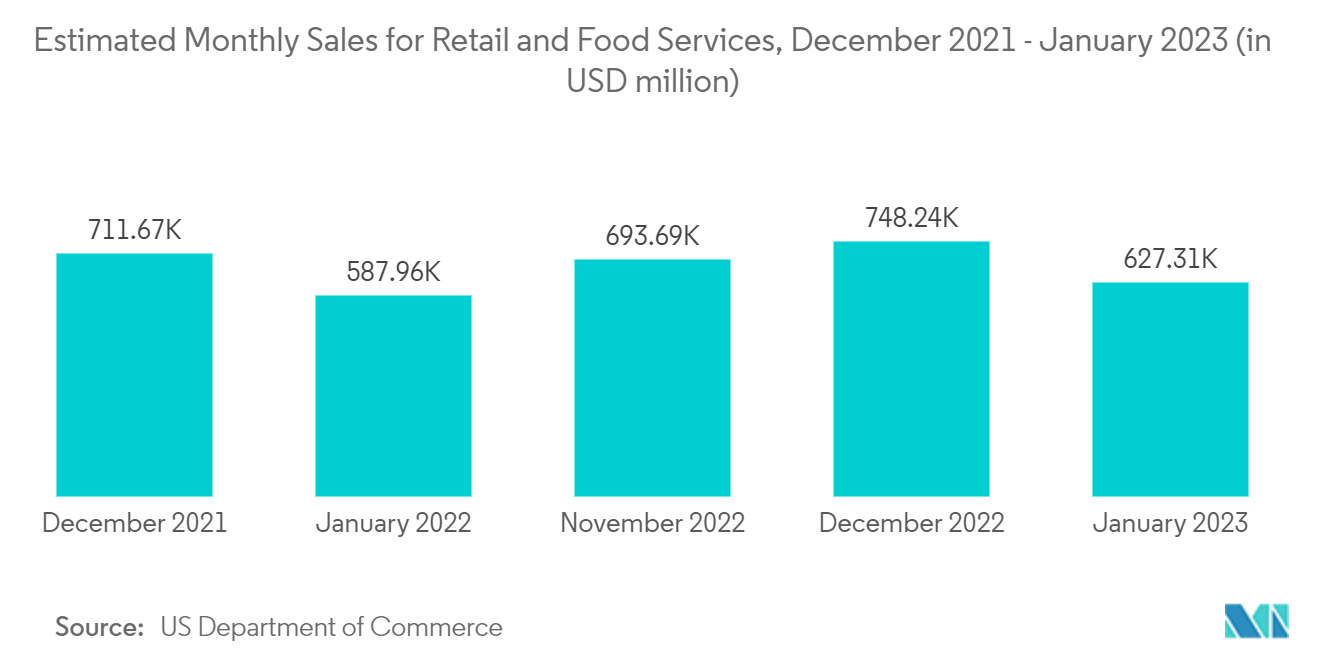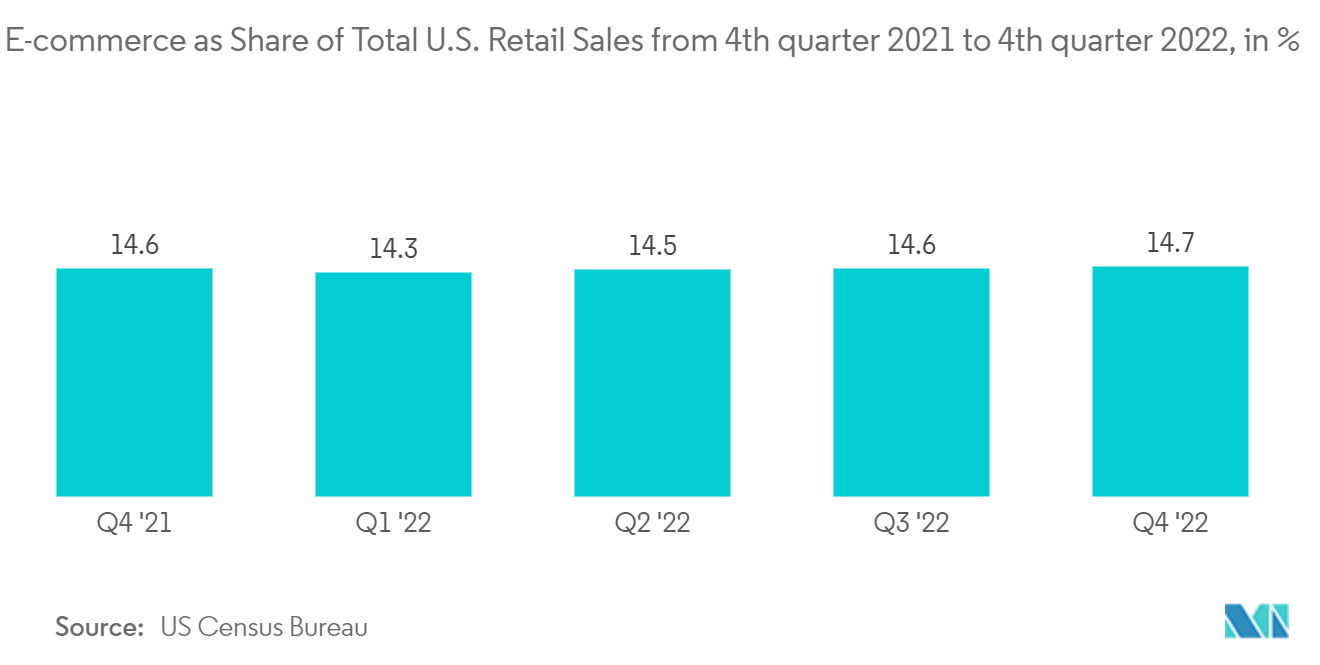Market Trends of NA In-Store Analytics Industry
Store Operation Management to Exhibit Good Growth Over the Forecast Period
- Store operation management entails a set of activities for running and monitoring all the operations inside a store. Some of the significant responsibilities of store management include working closely with staff, creating work schedules, communicating with suppliers to ensure the availability of products, and dealing with customer complaints.
- There are several companies within the North American region, especially in the United States, with many stores in the country. For instance, according to National Retail Federation, Walmart expanded in 2022. According to latest fiscal figures, the biggest US retailer made revenue of USD 141.6 billion in the Q1 of 2022, a 2.4 rise year on year. The majority of this revenue increase came from the United States market, where net sales increased by 4% to $96.9 billion in Q1 2022.
- The favourable market scenario has attracted several local and global software providers to develop analytics software to cater to the growing demand. For instance, IBM's Sterling Store Engagement solution provides a real-time view of the store inventory and customer and order data through an intuitive user interface that a store operator can access from sales counters and mobile devices.
- Similarly, SCOPIX Store Operations Analytics, which offers a cost-effective foundation for continuous monitoring of store operations, uses network-based IP video surveillance technology. The solution captures and analyzes live in-store conditions against specific benchmarks. Furthermore, it transforms video footage into actionable business intelligence that benefits store management, marketing teams, operations managers, and merchandisers.
- Furthermore, according to US Labor Department, grocery retailers around the United States are suffering from a labor crunch. As this shortage is not expected to go away soon, there is a growing interest in digital technology and automation among retail.

United States is Expected to Hold a Significant Market Share
- The United States is one of the top retail markets globally and was impacted by covid-19. However, returning on track with increasing numbers and bolstering the growth to maintain the boost requires advanced technology to analyze data at that scale. As per the National Retail Federation (NRF), Retail is the nation's largest private-sector employer, contributing USD 3.9 trillion to annual GDP and supporting one in four United States jobs - 52 million working Americans.
- According to the US Census Bureau, total retail sales in March 2022 was up 0.5% seasonally adjusted from February and increased 6.9% Y-O-Y. In February, the rise was 0.8% month over month and 18.2% Y-O-Y.
- The post-pandemic United States retail market has been trying to overcome obstacles using Data Analytics technology as a solution that will be shaped by several factors contributing significantly to how retailers function. Retail analytics solutions for the United States retail industry will focus on dealing with challenges that arise from heightened complexities and help to improve the market share. Their ability to offer actionable insights by analyzing multiple data sets will help their retail clients identify the right strategies for recovering lost sales and boost market share by addressing the dynamic needs of their customers.
- With the market reopening and letting go of lockdown, consumers are shifting to a Hybrid shopping structure, for this omnichannel data is of great significance. A smart omnichannel data and tracking strategy are essential to understanding customers' behavior. Brands with a robust omnichannel business rely on analytics to know how to take advantage of the opportunity possible by customers' behaviors toward the market.
- Furthermore, the country's e-commerce retail and in-store retail sales are likely to propel the industry. According to the US Department of Commerce and the US Census Bureau, e-commerce total U.S. retail sales climbed from 14.5% in the fourth quarter of 2021 to 14.8% in the third quarter of 2022.


